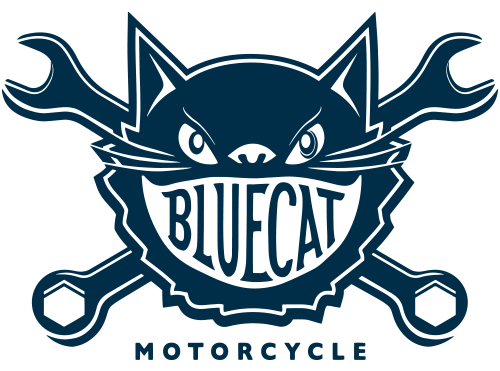guide: vintage motorcycles
Owning and riding a vintage bike is rewarding, satisfying, and every bit as fun as it looks. It can also be frustrating, expensive, and involved. We think it’s worth it, and we’ve put together this guide to help set your expectations.
Like any good vice, old motorcycles are more involving and expensive than one might first expect. We need to be aware of those costs up front. As romantic as these old machines are, it’s a high-maintenance relationship. In our experience, it’s worth it. An old machine can give us something new bikes just can’t. There’s character there. There’s history. There’s wisdom. That’s why we love riding them and why we love working on them.
There is nothing like the feeling and sound of riding a vintage machine. However, there are a few things to keep in mind in regards to the maintenance and upkeep of a vintage motorcycle. Knowing these factors beforehand can help prepare you for what to expect as caretaker of an old machine. It’s important to know the limits of your bike and how much fuss and expense you’re willing to put up with.
A vintage motorcycle is old. It’s not as sophisticated or refined as a modern bike. That’s a feature though, not an issue. That’s character.
An old bike is made of old parts. Some parts wear faster than others, but everything on the bike is will likely need attention at some point. That’s okay though. That’s what regular maintenance is for.
An old bike costs money to keep running. It’s going to need parts. It’s going to need maintenance work. It might break down and need a tow. Some old bikes may be cheap to buy, but they’re rarely cheap to own.
Ride it! It might seem like riding your bike is just going to wear it out faster, but in reality the opposite is true. Bikes that sit start to rot. The seals dry out. The rubber goes hard. Fuel turns to varnish and clogs the carburetor. Bikes that get ridden will need maintenance, sure, but they’ll live longer. Think of it like exercise for the machine. If your bike is going to sit for more than a couple weeks, drain the carburetors, stabilize the fuel, and put your battery on a tender. Otherwise it might not run when you get back to it.
Not all old bikes are created equal. Just because it’s vintage doesn’t mean it’s good. Many older Japanese and European motorcycles are brilliant machines that have become icons and remain desirable to this day. Some old bikes were deeply flawed designs when new and age has not done them any favors. Is that a CB650 you’ve got there? We’re so sorry.
Finding parts for old bikes can be challenging, so be patient. Many wear-out parts are available new, but sometimes we’re at the mercy of the local junk yard or eBay. Even when parts are available they don’t always ship right away and these days shipping delays are more common than ever. Be patient. Getting parts will take some time.
Avoid gasoline with ethanol in it! Today’s fuel can contain as much as 15% ethanol, along with other additives that can cause trouble in older bikes. Modern fuel is especially bad if the bike sits. Look for “non-oxygenated” premium fuel at your local gas station instead. We love that stuff, and so will your old motorcycle.
Don’t use Seafoam in your vintage bike, especially as a fuel stabilizer. We’ve lost count of how many carburetors we’ve had to clean the Seafoam goo out of to get a bike running again.

